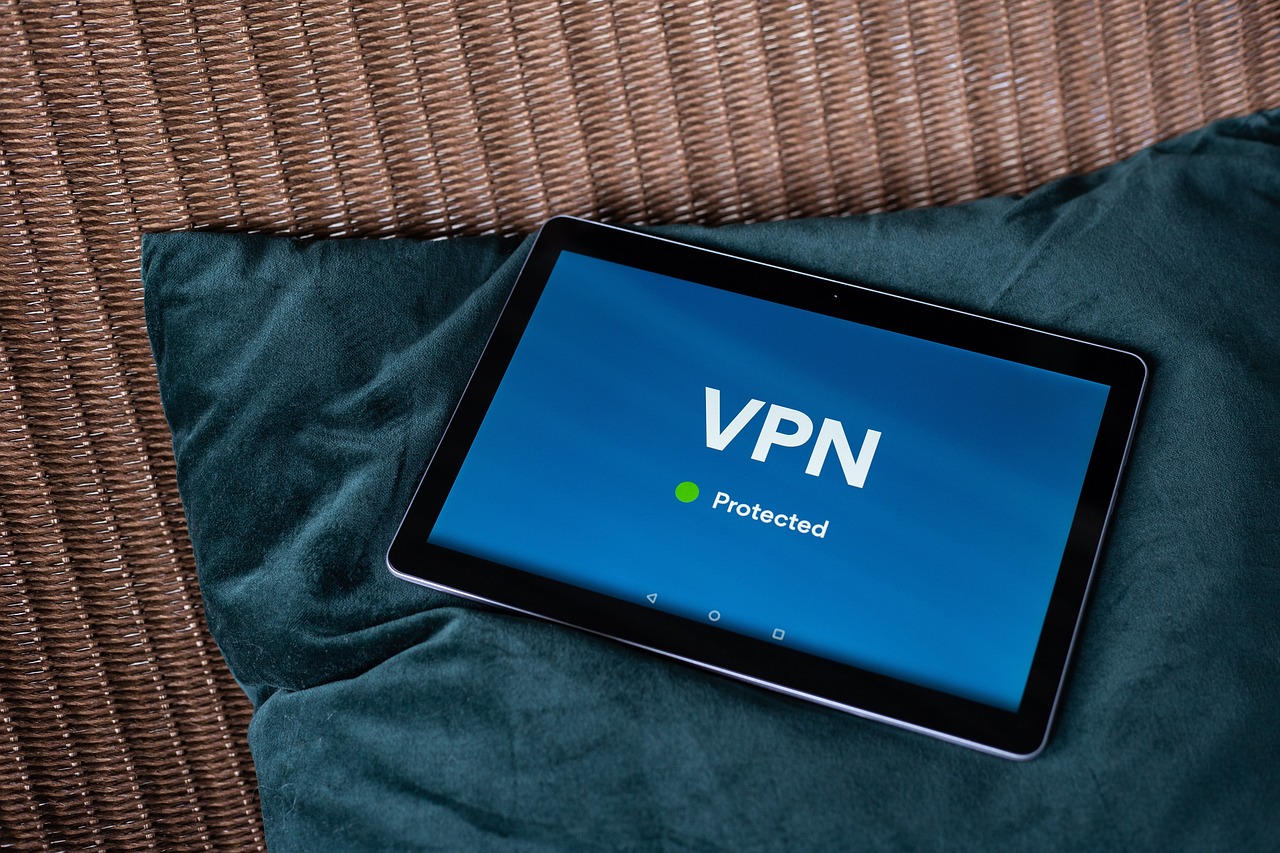How Cybersecurity is Evolving for Military Strategies
In the rapidly changing landscape of warfare, the role of cybersecurity has become more critical than ever. Gone are the days when battles were fought solely on land, sea, or air; today, the digital battlefield is just as important. Military strategies are evolving to incorporate advanced cybersecurity measures, recognizing that the integrity of information and the security of systems are paramount to national defense. As we delve deeper into this topic, it becomes clear that cybersecurity is not just a technical issue but a fundamental component of military strategy.
The evolution of cybersecurity in military strategies reflects a broader understanding of the threats posed by adversaries in the digital realm. Cyberattacks can disrupt operations, steal sensitive information, and even manipulate data to create chaos in military planning. This reality has led military organizations to rethink their approach to security, moving beyond traditional defenses to embrace a more comprehensive strategy that includes proactive measures and continuous adaptation.
Moreover, the integration of cybersecurity into military operations is akin to fortifying a castle. Imagine a medieval fortress; its walls protect against invaders, but if the gates are left unguarded or if spies infiltrate the castle, the entire structure is at risk. Similarly, military forces must ensure that their cyber defenses are robust and that personnel are trained to recognize and respond to potential threats. This approach not only safeguards critical systems but also enhances operational effectiveness in an increasingly interconnected world.
As we examine the transformative role of cybersecurity in military strategies, it's essential to recognize that this is not a one-size-fits-all solution. Each military organization must tailor its cybersecurity measures to its unique operational environment and the specific threats it faces. This customization involves investing in the latest technologies, fostering collaboration between military and civilian sectors, and continuously updating training programs to keep pace with emerging threats.
Ultimately, the evolution of cybersecurity in military strategies signifies a shift toward a more integrated and agile defense posture. By embracing the complexities of the digital age, military forces can better protect their assets, maintain operational readiness, and ensure that they are prepared to face the challenges of modern warfare head-on.
- Why is cybersecurity important for military operations?
Cybersecurity is crucial for protecting sensitive information and infrastructure from cyberattacks that can compromise national security and operational effectiveness. - What are some common cyber threats faced by military organizations?
Military forces contend with various threats, including state-sponsored attacks, ransomware, and insider threats, all of which necessitate robust defenses. - How can military personnel be trained to handle cyber threats?
Implementing comprehensive training programs ensures that military personnel are equipped to recognize and respond to cyber threats effectively. - What role do advanced technologies play in military cybersecurity?
Investing in technologies like artificial intelligence and machine learning enhances threat detection and response capabilities for military forces.

The Importance of Cybersecurity in Modern Warfare
In today's conflict landscape, cybersecurity has emerged as a cornerstone of military operations. It is not merely an add-on or an afterthought; rather, it is a fundamental aspect that can dictate the success or failure of military missions. The increasing reliance on technology has made military forces more vulnerable to cyberattacks, which can compromise sensitive information and disrupt critical infrastructure. Imagine a scenario where enemy hackers infiltrate a military network, gaining access to classified plans and operational data. This isn't just a plot from a sci-fi movie; it's a very real threat that modern militaries must contend with.
As the lines between physical and digital warfare blur, the importance of cybersecurity becomes even more pronounced. Military operations today rely heavily on interconnected systems, from communication networks to weapon systems. A successful cyberattack can paralyze these systems, leading to catastrophic consequences. For instance, during the 2007 cyberattacks on Estonia, the country experienced widespread disruptions that affected government, media, and banking services. Such incidents serve as a stark reminder that the battlefield has expanded beyond traditional domains.
Furthermore, the implications of cyber vulnerabilities extend beyond immediate operational setbacks. They can erode national security and public trust in military capabilities. If adversaries can demonstrate their ability to breach military networks, it not only undermines confidence in defense strategies but also emboldens them to escalate their actions. This creates a vicious cycle where the need for robust cybersecurity measures becomes more critical than ever.
To illustrate the significance of cybersecurity in modern warfare, consider the following key points:
- Protection of Sensitive Information: Military operations involve the handling of classified data that, if exposed, could jeopardize missions and personnel safety.
- Operational Continuity: Cyberattacks can disrupt command and control systems, leading to confusion and chaos during critical operations.
- Deterrence: A strong cybersecurity posture can deter potential adversaries from launching attacks, knowing that their efforts could be met with swift retaliation.
In conclusion, the importance of cybersecurity in modern warfare cannot be overstated. As military forces adapt to an increasingly digital battlefield, they must prioritize cybersecurity to safeguard their operations and maintain a strategic advantage. The stakes are high, and the consequences of failure can be dire. Therefore, investing in cybersecurity is not just an option; it is a necessity for modern military strategies.
- What is the primary goal of military cybersecurity? The primary goal is to protect sensitive military information and ensure operational effectiveness against cyber threats.
- How do cyberattacks affect military operations? Cyberattacks can disrupt communication, compromise data integrity, and even incapacitate critical systems, leading to operational failures.
- What measures are being taken to enhance military cybersecurity? Military organizations are investing in advanced technologies, training programs, and collaboration with private sector partners to bolster their cybersecurity defenses.

Emerging Cyber Threats to Military Operations
In an era where technology reigns supreme, the battlefield has expanded beyond physical borders into the digital realm. Military operations today are increasingly vulnerable to a variety of emerging cyber threats that can disrupt not only communication but also the very fabric of national security. These threats are not just theoretical; they are real and evolving, requiring military organizations to stay one step ahead in their defensive strategies.
Among the most pressing threats are state-sponsored attacks, where nation-states leverage cyber capabilities to gain an upper hand over their adversaries. These attacks can manifest in various forms, including espionage, sabotage, and even direct attacks on critical infrastructure. The motivations behind these attacks range from gathering intelligence to undermining the operational effectiveness of enemy forces. This new frontier of warfare means that military organizations must prioritize cybersecurity as a critical component of their strategic planning.
Additionally, the rise of ransomware attacks poses a significant risk to military operations. Cybercriminals are increasingly targeting military networks to encrypt sensitive data and demand hefty ransoms for its release. This not only jeopardizes operational security but also diverts valuable resources and attention away from critical missions. The implications of a successful ransomware attack can be catastrophic, leading to potential loss of life and operational failure.
Moreover, there are insider threats that stem from within military ranks. Personnel with legitimate access to sensitive systems can either inadvertently or maliciously compromise data integrity. Whether through negligence or intentional sabotage, these insider threats can have devastating consequences. Therefore, fostering a culture of cybersecurity awareness among military personnel is essential to mitigate these risks.
To provide a clearer picture of the evolving cyber threat landscape, consider the following table that outlines the key types of cyber threats faced by military operations:
| Type of Threat | Description | Potential Impact |
|---|---|---|
| State-Sponsored Attacks | Cyber operations conducted by nation-states to disrupt or gain intelligence. | Loss of sensitive data, operational disruption. |
| Ransomware | Malware that encrypts data and demands ransom for decryption. | Operational paralysis, financial loss. |
| Insider Threats | Risks posed by personnel with access to sensitive information. | Data breaches, compromised security. |
As military forces navigate this complex landscape, they must adopt a multifaceted approach to address these emerging threats. This includes investing in advanced technologies, enhancing training programs, and fostering collaboration with private sector experts. The stakes are high, and the need for robust cybersecurity measures has never been more critical.
- What are state-sponsored cyber attacks? These are cyber operations conducted by nation-states aimed at gathering intelligence or disrupting adversaries.
- How does ransomware impact military operations? Ransomware can encrypt critical data, demanding ransom for its release, which can halt military operations and compromise security.
- What are insider threats in military cybersecurity? Insider threats come from personnel with legitimate access who may inadvertently or maliciously compromise sensitive information.

State-Sponsored Cyber Attacks
In the realm of modern warfare, have emerged as a formidable weapon wielded by nations seeking to gain strategic advantages over their adversaries. These attacks are not merely acts of aggression; they are calculated maneuvers aimed at disrupting military operations, stealing sensitive information, and undermining national security. Imagine a battlefield where the combatants are not just soldiers on the ground but also hackers in the shadows, launching digital assaults that can cripple entire military infrastructures.
One of the most alarming aspects of state-sponsored cyber attacks is their sophistication. Unlike typical cybercriminals, these attackers are often backed by government resources, allowing them to develop advanced tactics and tools. They target military networks with the intent of gathering intelligence, sabotaging operations, or even manipulating critical systems. The implications of such actions can be catastrophic, leading to loss of life, compromised missions, and a significant erosion of trust in military capabilities.
To illustrate the severity of the threat, consider the following notable incidents:
- Stuxnet: A highly sophisticated worm that targeted Iran's nuclear facilities, demonstrating how cyber tools can be used to achieve strategic military objectives without traditional warfare.
- Russian Cyber Operations: In recent years, various military and governmental networks in Ukraine and the United States have faced attacks attributed to Russian state-sponsored groups, aiming to disrupt operations and gather sensitive information.
- Chinese Cyber Espionage: Numerous reports have indicated that Chinese hackers have infiltrated U.S. military networks, stealing valuable data related to defense technology and strategies.
These incidents highlight a critical need for military organizations to enhance their cyber defenses. The question is not if these attacks will occur, but when. Therefore, armed forces must adopt a proactive approach to cybersecurity. This includes not only strengthening their defenses but also fostering a culture of vigilance and readiness among personnel. The integration of advanced technologies, such as artificial intelligence and machine learning, can significantly improve threat detection and response times. As military strategies evolve, so too must the methods employed to protect against these insidious threats.
In conclusion, state-sponsored cyber attacks represent a new frontier in warfare that military organizations can no longer afford to overlook. The stakes are high, and the consequences of inaction could be dire. By understanding the tactics employed by state actors and investing in robust cybersecurity measures, military forces can better prepare to face the challenges of the digital battlefield.
- What are state-sponsored cyber attacks? State-sponsored cyber attacks are cyber operations conducted by government-backed groups aimed at disrupting, damaging, or stealing information from other nations' military or governmental systems.
- How can military organizations defend against these attacks? Military organizations can defend against state-sponsored attacks by investing in advanced cybersecurity technologies, conducting regular training for personnel, and fostering collaboration with intelligence agencies.
- What are some examples of state-sponsored cyber attacks? Notable examples include the Stuxnet worm targeting Iran's nuclear program and various attacks attributed to Russian and Chinese hackers against military networks.

Notable Incidents in Cyber Warfare
Cyber warfare has seen a series of notable incidents that have not only disrupted military operations but have also reshaped the landscape of national security. One of the most significant events was the Stuxnet worm, which was discovered in 2010. This sophisticated piece of malware targeted Iran's nuclear facilities, specifically the centrifuges used to enrich uranium. By manipulating the machinery while reporting normal operations, Stuxnet effectively delayed Iran's nuclear ambitions and showcased how cyber tools could achieve strategic military objectives without physical confrontation.
Another pivotal incident occurred in 2015, when hackers associated with the Russian government breached the networks of the Ukrainian power grid. This attack resulted in a blackout affecting hundreds of thousands of people. It demonstrated the potential for cyberattacks to have real-world consequences, disrupting critical infrastructure and raising alarms about vulnerabilities in national defense systems. Such incidents highlight the necessity for military forces to understand and mitigate the risks posed by cyber threats.
The 2016 U.S. presidential election also serves as a stark reminder of how cyber warfare can influence political landscapes. State-sponsored actors were found to have infiltrated various systems, leading to the leaking of sensitive information and sowing discord among the electorate. This incident underscored the importance of cybersecurity not just for military operations but also for the integrity of democratic processes.
In addition to these high-profile attacks, there are countless smaller incidents that occur regularly, targeting military contractors and defense systems. For example, in 2020, a series of cyberattacks aimed at defense contractors led to the theft of sensitive data related to advanced military technologies. These breaches not only compromise the security of military operations but also provide adversaries with critical insights into national defense capabilities.
The evolution of cyber warfare tactics is evident in the way state-sponsored groups adapt their strategies. They are increasingly utilizing phishing campaigns, ransomware, and advanced persistent threats (APTs) to infiltrate military networks. As these tactics become more sophisticated, it becomes imperative for military organizations to stay ahead of the curve by investing in robust cybersecurity measures.
In summary, the incidents highlighted above illustrate the growing significance of cybersecurity in military operations. As the battlefield extends into the digital realm, understanding past cyber warfare incidents can provide valuable insights into potential vulnerabilities and the necessary countermeasures to protect national security.
- What is cyber warfare? Cyber warfare refers to the use of digital attacks by one nation to disrupt the vital computer systems of another, often targeting military networks and critical infrastructure.
- How does cybersecurity impact military strategies? Cybersecurity is crucial for protecting sensitive military information and ensuring operational effectiveness, making it a vital component of modern military strategies.
- What are some common tactics used in cyber warfare? Common tactics include state-sponsored attacks, ransomware, phishing campaigns, and exploitation of software vulnerabilities.
- Why is training important for military personnel in cybersecurity? Training ensures that military personnel are aware of cyber threats and equipped to respond effectively, fostering a culture of cybersecurity within the organization.

Countermeasures Against State-Sponsored Threats
In the ever-evolving landscape of cyber warfare, military organizations must adopt a multi-faceted approach to counter the sophisticated tactics employed by state-sponsored threats. These adversaries are not only well-funded but also highly skilled, making traditional defenses insufficient. As such, a combination of collaboration, investment, and innovation is essential to fortify military cybersecurity.
One of the primary countermeasures involves fostering close collaboration between military and intelligence agencies. By sharing intelligence on emerging threats and vulnerabilities, these entities can develop a more comprehensive understanding of potential risks. This collaboration can take various forms, including joint exercises and information-sharing platforms that enhance situational awareness. For instance, when military personnel work alongside cybersecurity experts from intelligence agencies, they can identify and mitigate threats before they escalate into full-blown attacks.
Additionally, investing in advanced technologies is crucial for staying ahead of state-sponsored cyber threats. Technologies like artificial intelligence (AI) and machine learning (ML) play a pivotal role in enhancing threat detection capabilities. These technologies can analyze vast amounts of data in real-time, identifying patterns and anomalies that may indicate a cyber intrusion. Moreover, AI-driven systems can automate responses to threats, allowing military forces to react swiftly and effectively. A recent study showed that organizations utilizing AI in their cybersecurity strategies reduced incident response times by up to 50%.
Furthermore, implementing robust training programs for military personnel is essential. Cybersecurity is not just the responsibility of IT specialists; every service member must be aware of the potential threats and their roles in safeguarding sensitive information. Regular training sessions can help instill a culture of cybersecurity awareness, where personnel are encouraged to report suspicious activities and understand the importance of adhering to security protocols. This proactive approach can significantly reduce the risk of insider threats and human error, which are often exploited by state-sponsored attackers.
In summary, countering state-sponsored cyber threats requires a comprehensive strategy that combines collaboration, advanced technology, and continuous training. By embracing these countermeasures, military organizations can enhance their resilience against cyber warfare, ensuring that they remain one step ahead of their adversaries in this critical domain.
- What are state-sponsored cyber threats?
State-sponsored cyber threats refer to attacks orchestrated by government-affiliated groups that aim to disrupt, damage, or gain intelligence from the systems of another nation. These threats are often characterized by their sophistication and strategic intent. - How can military organizations improve their cybersecurity?
Military organizations can enhance their cybersecurity by fostering collaboration with intelligence agencies, investing in advanced technologies like AI and ML, and implementing comprehensive training programs for all personnel. - Why is training important in military cybersecurity?
Training is crucial because it equips military personnel with the knowledge and skills to recognize and respond to cyber threats effectively. A well-informed workforce can significantly reduce the risk of successful cyber attacks. - What role does technology play in countering cyber threats?
Technology plays a vital role in detecting and responding to cyber threats. Advanced systems can analyze data in real-time, identify vulnerabilities, and automate responses, thereby enhancing overall cybersecurity posture.

Insider Threats in Military Cybersecurity
Insider threats in military cybersecurity are a growing concern that can no longer be overlooked. These threats arise from individuals within the organization—be it military personnel, contractors, or even trusted partners—who have access to sensitive information and systems. The challenge here is that these insiders can either act out of malice or simply due to negligence. Imagine a soldier who, unknowingly, clicks on a phishing link, inadvertently opening the floodgates for cybercriminals. The implications of such actions can be catastrophic, leading to compromised data integrity and national security.
One of the most alarming aspects of insider threats is the dual nature of the risk. On one hand, you have the intentional insider, someone who deliberately seeks to harm the organization or share confidential information. On the other hand, there’s the unintentional insider, who may not even realize their actions could lead to a security breach. This duality makes it exceptionally challenging for military organizations to implement effective countermeasures. To combat this, it's essential for military leaders to foster a culture of cybersecurity awareness among all personnel.
Organizations can adopt several strategies to mitigate insider threats:
- Regular Training: Continuous training programs are crucial. Personnel should be educated on recognizing suspicious activities and understanding the importance of safeguarding sensitive information.
- Access Control: Implementing stringent access control measures ensures that only authorized individuals can access sensitive data. This limits potential damage from insider threats.
- Monitoring and Auditing: Regular audits and monitoring of user activities can help identify unusual behavior that may indicate an insider threat.
Moreover, the psychological aspect of insider threats cannot be ignored. Employees who feel undervalued or disconnected from their organization may be more likely to engage in harmful activities. Building a strong organizational culture that emphasizes trust, respect, and transparency can significantly reduce the risk of insider threats. After all, a motivated and engaged workforce is less likely to turn against their own organization.
In conclusion, addressing insider threats in military cybersecurity requires a multifaceted approach that combines technology, training, and culture. By recognizing the unique challenges posed by insiders, military organizations can better protect their critical systems and maintain operational effectiveness in an increasingly complex cyber landscape.
Q: What are insider threats?
A: Insider threats refer to risks posed by individuals within an organization who have inside information concerning the organization's security practices, data, or computer systems. These can be intentional or unintentional actions that compromise security.
Q: How can military organizations mitigate insider threats?
A: Mitigation strategies include regular training, implementing stringent access controls, and conducting monitoring and auditing of user activities to identify potential insider threats early.
Q: Why is the psychological aspect important in addressing insider threats?
A: Understanding the psychological factors that influence employee behavior is crucial. A motivated and engaged workforce is less likely to pose a threat to organizational security, making it essential to foster a positive organizational culture.

Strategies for Enhancing Military Cybersecurity
In the rapidly changing landscape of modern warfare, military organizations are recognizing the critical need to bolster their cybersecurity measures. As threats evolve, so too must the strategies employed to counteract them. It's not just about having firewalls and antivirus software anymore; it's about creating a comprehensive defense system that integrates technology, personnel training, and collaboration with other sectors. Imagine a fortress, where every brick represents a layer of security—this is the approach military forces are taking to safeguard their operations.
One of the foundational strategies in enhancing military cybersecurity is the implementation of robust training and awareness programs. These programs are designed to equip personnel with the knowledge and skills necessary to identify and respond to potential cyber threats. By fostering a culture of cybersecurity awareness, military organizations can significantly reduce the risk of human error, which is often the weakest link in the security chain. Regular drills and simulations can help personnel practice their responses to various cyber incidents, ensuring that they are not just aware but also prepared. For instance, a recent training initiative included simulated phishing attacks, where personnel had to identify and report suspicious emails, enhancing their vigilance against real threats.
Another essential strategy is the investment in advanced technologies. As cyber threats become more sophisticated, military forces are turning to cutting-edge solutions such as artificial intelligence (AI) and machine learning (ML). These technologies can analyze vast amounts of data in real-time, identifying patterns and anomalies that may signal a potential attack. For example, AI-driven systems can automate threat detection, allowing military personnel to focus on strategic decision-making rather than getting bogged down in data analysis. This not only speeds up response times but also enhances the overall effectiveness of military operations.
Collaboration with private sector partners is also a key component of enhancing military cybersecurity. In many cases, private companies possess advanced technologies and expertise that can be leveraged to strengthen military defenses. Joint exercises and knowledge-sharing initiatives can help bridge the gap between military and civilian cybersecurity practices. By working together, both sectors can develop innovative solutions to counter emerging threats. For instance, public-private partnerships have led to the development of advanced threat intelligence platforms, which provide real-time insights into potential cyber threats.
Moreover, establishing a cybersecurity framework that outlines clear policies and procedures is crucial. This framework should include guidelines for incident response, risk management, and compliance with national and international cybersecurity standards. By having a well-defined structure in place, military organizations can ensure that all personnel understand their roles and responsibilities in maintaining cybersecurity. This is akin to having a detailed playbook in sports; everyone knows the game plan, reducing confusion during critical moments.
In conclusion, enhancing military cybersecurity is not a one-time effort but a continuous process that requires attention to training, technology, collaboration, and policy development. As threats evolve, so must the strategies to combat them. By adopting a multifaceted approach, military organizations can better protect their sensitive information and maintain operational effectiveness in an increasingly complex cyber landscape.
- What are the main threats to military cybersecurity? Military organizations face various threats, including state-sponsored attacks, ransomware, and insider threats.
- How can training improve military cybersecurity? Training helps personnel recognize and respond to cyber threats, reducing the risk of human error.
- Why is collaboration with the private sector important? Private companies often have advanced technologies and expertise that can enhance military cybersecurity efforts.
- What role does technology play in military cybersecurity? Technologies like AI and machine learning improve threat detection and response capabilities.

Training and Awareness Programs
In the ever-evolving landscape of military cybersecurity, play a pivotal role in fortifying defenses against cyber threats. Imagine a soldier stepping into battle without understanding the terrain or the enemy's tactics; similarly, military personnel must be equipped with the knowledge and skills to navigate the complex world of cyber warfare. These programs are not just about teaching basic cybersecurity principles; they are about fostering a culture of vigilance and preparedness.
First and foremost, effective training programs are tailored to the unique needs of military operations. They encompass a range of topics, from recognizing phishing attempts to understanding the implications of data breaches. By using real-world scenarios and simulations, these programs ensure that personnel can apply their knowledge in practical situations. For instance, a simulation might involve a mock cyberattack on a military network, allowing participants to practice their response in a controlled environment. This hands-on approach not only enhances learning but also builds confidence among the troops.
Moreover, continuous education is crucial in the fast-paced realm of technology. Cyber threats are constantly evolving, and so must the training programs. Regular updates and refresher courses keep military personnel informed about the latest threats and defensive strategies. For example, as new malware strains emerge or as state-sponsored cyber tactics evolve, training must adapt to address these changes. This adaptability ensures that military forces remain one step ahead of potential adversaries.
Another vital aspect of these programs is the emphasis on collaboration and communication. Cybersecurity is not solely the responsibility of IT specialists; it requires a collective effort from all members of the military. Awareness campaigns can help instill a sense of responsibility among personnel, encouraging them to report suspicious activities and potential vulnerabilities. In this way, each individual becomes a crucial line of defense against cyber threats.
To illustrate the importance of these training programs, consider the following table that outlines key components of effective military cybersecurity training:
| Component | Description |
|---|---|
| Real-World Simulations | Hands-on training that mimics actual cyberattack scenarios. |
| Regular Updates | Continuous education on emerging threats and defensive techniques. |
| Collaboration | Encouraging teamwork and communication among all personnel. |
| Awareness Campaigns | Initiatives to promote a culture of cybersecurity vigilance. |
In conclusion, training and awareness programs are not just an afterthought in military cybersecurity; they are a fundamental pillar that supports the entire structure. By investing in comprehensive training, military organizations can empower their personnel to become proactive defenders against cyber threats. Just as soldiers rely on their training to succeed in physical combat, they must also depend on their cybersecurity training to navigate the digital battlefield. As we look to the future, the importance of these programs will only continue to grow, ensuring that military forces remain resilient in the face of ever-evolving cyber challenges.
- What is the primary goal of training programs in military cybersecurity? The main goal is to equip personnel with the knowledge and skills to recognize and respond to cyber threats effectively.
- How often should training programs be updated? Training programs should be updated regularly to reflect the latest cyber threats and technologies.
- Who is responsible for cybersecurity training in the military? While IT specialists lead the training, all military personnel share the responsibility for maintaining cybersecurity awareness.
- What types of scenarios are used in simulations? Simulations can include various cyberattack scenarios, such as phishing attacks, malware infections, and data breaches.

Investment in Advanced Technologies
This article explores the transformative role of cybersecurity in military operations, highlighting its significance in modern warfare, emerging threats, and the strategies being adopted to counteract them.
In today's conflict landscape, cybersecurity is crucial for protecting sensitive military information and infrastructure from cyberattacks, which can compromise national security and operational effectiveness.
Military forces face a range of evolving cyber threats, including state-sponsored attacks, ransomware, and insider threats, necessitating robust defenses to safeguard critical systems and data.
State actors are increasingly engaging in cyber warfare, targeting military networks to gather intelligence, disrupt operations, and undermine adversaries, making it imperative for armed forces to enhance their cyber defenses.
Examining historical cyber incidents reveals the tactics and techniques employed by state-sponsored groups, providing insights into potential vulnerabilities within military infrastructures.
Developing effective countermeasures involves collaboration between military and intelligence agencies, as well as investment in advanced technologies to detect and neutralize state-sponsored cyber threats.
Insider threats pose significant risks to military cybersecurity, as personnel with access to sensitive systems can inadvertently or maliciously compromise data integrity and security.
To combat evolving threats, military organizations are adopting comprehensive cybersecurity strategies that include training, technology upgrades, and collaborative efforts with private sector partners.
Implementing training programs for personnel ensures that all members are equipped with the knowledge to recognize and respond to cyber threats effectively, fostering a culture of cybersecurity awareness.
In the realm of military cybersecurity, is not just a trend; it’s a necessity. As cyber threats evolve, so must the tools and techniques used to combat them. Military organizations are increasingly turning to cutting-edge technologies such as artificial intelligence (AI) and machine learning (ML) to enhance their cybersecurity posture. These technologies allow for the analysis of vast amounts of data in real-time, enabling quicker detection and response to potential threats.
For instance, AI can be employed to identify patterns in network traffic that may indicate a cyberattack, while ML algorithms can learn from past incidents to improve future threat detection capabilities. This proactive approach not only minimizes the risk of successful attacks but also enhances overall operational efficiency.
Moreover, the integration of cloud computing solutions offers military organizations the ability to store and analyze data securely while ensuring that critical information is accessible only to authorized personnel. This layered security approach is essential for safeguarding sensitive military operations. Here's a table summarizing some of the key technologies being adopted:
| Technology | Purpose |
|---|---|
| Artificial Intelligence | Real-time threat detection and response |
| Machine Learning | Improving threat detection based on historical data |
| Cloud Computing | Secure data storage and accessibility |
| Blockchain | Enhancing data integrity and security |
Furthermore, the military is exploring the use of blockchain technology to enhance data integrity and security. With its decentralized nature, blockchain can help prevent unauthorized access and ensure that sensitive information remains unaltered. By leveraging these advanced technologies, military organizations can create a robust cybersecurity framework capable of adapting to the dynamic threat landscape.
- What is the role of AI in military cybersecurity? AI plays a crucial role in identifying and responding to cyber threats in real-time, enhancing the military's ability to protect sensitive information.
- How does machine learning improve cybersecurity? Machine learning algorithms analyze historical data to identify patterns and improve threat detection capabilities over time.
- Why is cloud computing important for military operations? Cloud computing offers secure data storage and ensures that critical information is accessible only to authorized personnel, which is vital for operational security.
Frequently Asked Questions
- What is the role of cybersecurity in modern military operations?
Cybersecurity plays a pivotal role in safeguarding sensitive military information and infrastructure. In an era where cyberattacks can compromise national security, effective cybersecurity measures are essential for maintaining operational effectiveness and protecting critical data.
- What types of cyber threats do military forces face today?
Military forces encounter a variety of cyber threats, including state-sponsored attacks, ransomware, and insider threats. These evolving threats require robust defenses to ensure the integrity and security of military operations and data.
- How do state-sponsored cyber attacks impact military strategies?
State-sponsored cyber attacks can disrupt military operations, gather intelligence, and undermine national security. As these attacks become more sophisticated, it is crucial for military organizations to enhance their cyber defenses and develop strategies to counteract these threats effectively.
- What are some notable incidents in cyber warfare?
Historical cyber incidents illustrate the tactics used by state-sponsored groups and highlight vulnerabilities within military infrastructures. Understanding these incidents helps military organizations improve their cybersecurity posture and prepare for future threats.
- What measures are taken against insider threats in military cybersecurity?
Insider threats can compromise military cybersecurity significantly. To mitigate these risks, military organizations implement strict access controls, conduct regular audits, and provide training to personnel about the importance of data integrity and security.
- How are military organizations enhancing their cybersecurity strategies?
To combat evolving threats, military organizations are adopting comprehensive cybersecurity strategies that include training programs for personnel, investment in advanced technologies, and collaboration with private sector partners to enhance their defenses.
- Why is training and awareness important in military cybersecurity?
Training and awareness programs equip personnel with the knowledge to recognize and respond to cyber threats effectively. Fostering a culture of cybersecurity awareness ensures that all members of the military are prepared to protect sensitive information and systems.
- What technologies are being invested in to improve military cybersecurity?
Military organizations are investing in cutting-edge technologies like artificial intelligence and machine learning. These technologies enhance threat detection capabilities, allowing military forces to respond swiftly to potential cyber incidents and improve overall cybersecurity resilience.



















